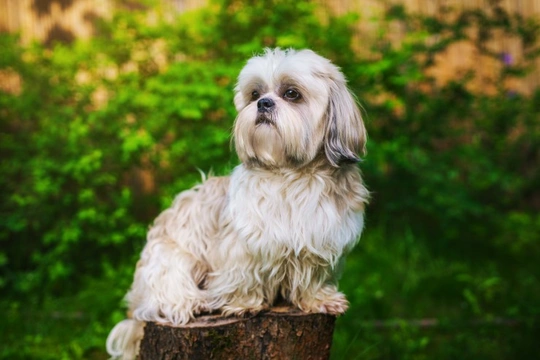
Why you should never allow mats to develop in your dog’s coat
Owning a dog with a very short, single-layered coat makes caring for their skin and coat very easy. Whilst most dogs enjoy being brushed and groomed when this is undertaken with care as brushing helps to stimulate the skin and coat, dogs with short, easy to look after coats don’t tend to suffer with problems like knots and mats, which can develop in some types of dog coats very easily but that can be quite challenging to resolve.
Dogs that have very long coats or those with dense, plush coats with more than one layer such as the Siberian husky are all a lot more high-maintenance in terms of their coat care requirements, particularly during times of the year when they shed heavily. Many toy dog breeds also need a lot of brushing, grooming and coat care too, such as the Shih Tzu.
For many dog owners whose dog requires daily brushing and grooming, this is all part of the fun of dog ownership, and spending a little quiet time with your dog every day brushing and caring for their coat and skin can help to reinforce your bond with your dog and improve your appreciation for each other.
However, the daily care required by a dog whose coat is high maintenance can soon become onerous for many owners, and it is easy to let things slip and miss a few days of coat care when you are busy or have other things on your mind.
As mentioned, mats and knots can develop within just a couple of days within certain types of dog coats, and knowing that you will have to spend a reasonable amount of time removing and combing them out can feel very much like hard work at times.
However, you should never allow mats to develop within your dog’s coat or leave them to worsen if they do, because this can cause a range of problems for your dog over time. The longer you leave mats the harder they are to tackle too – and if your dog’s coat gets really bad, the only option may be to take them to a professional dog groomer to have their coat fully clipped off, which is challenging on its own if the coat is badly matted.
In this article we will explain why you should never let mats develop or leave mats in your dog’s coat, and outline some of the problems that doing this can cause. Read on to learn more.
Mats can cause skin infections
Even though dogs are covered with fur, air can get to the skin to allow it to breathe and keep it healthy and in balance. This is true regardless of how dense or long your dog’s fur is. However, if your dog’s fur forms mats, these thick, tight and dense patches of fur lie very close to the skin and tighten up over time, which means that moisture, dirt, bacteria and other nasties can all get trapped within them, and cause a range of problems.
Matted fur can lead to hot spots, sores and infections developing on the skin, which are all likely to be painful for your dog and that will make both removing the mat and treating the problem it has caused that much harder.
Mats can make your dog smell bad
Dog coats that are clean and properly groomed don’t smell bad, but if your dog’s coat is unkempt and matted, it is also probably quite dirty. The mats themselves trap dirt and bacteria, as mentioned above, and all of these things can give your dog an unpleasant and funky smell.
Added to this, it is often the hair around the dog’s back end and undercarriage that get matted up first, which only serves to worsen their funky smell!
Matted fur worsens over time
Mats don’t go away on their own, and get thicker, tighter and larger if left unchecked as they felt up and tangle with ever-larger areas of fur.
Old mats can be almost impossible to lift from the skin to cut into them or break them down, which increases the risks of accidentally cutting the dog, and even clipping off mats can be very challenging and take a long time, often blunting several clipper blades in the process.
This means that the longer you leave mats on your dog, the harder they will be to resolve!
Mats pull on the skin and cause pain and discomfort
As mats tighten up, they pull on the skin and cause discomfort and pinching, which will of course be painful and uncomfortable for your dog. Not only will this distress your dog, but mats that form in certain areas like around the inner thighs and armpits can even restrict your dog’s movement when they get bad enough.
Preventing mats forming in your dog’s coat
If your dog’s coat is prone to developing mats, the only way to prevent this is to keep on top of their brushing and grooming, paying special attention to areas of the coat that are particularly prone to matting up.
Resolve any mats or knots that develop quickly, and if you’re finding that things are getting on top of you or you’re having problems removing the mats you find, consider booking an appointment with a professional dog groomer to resolve the problem and restore your dog’s coat so that you can manage it more easily in future.



